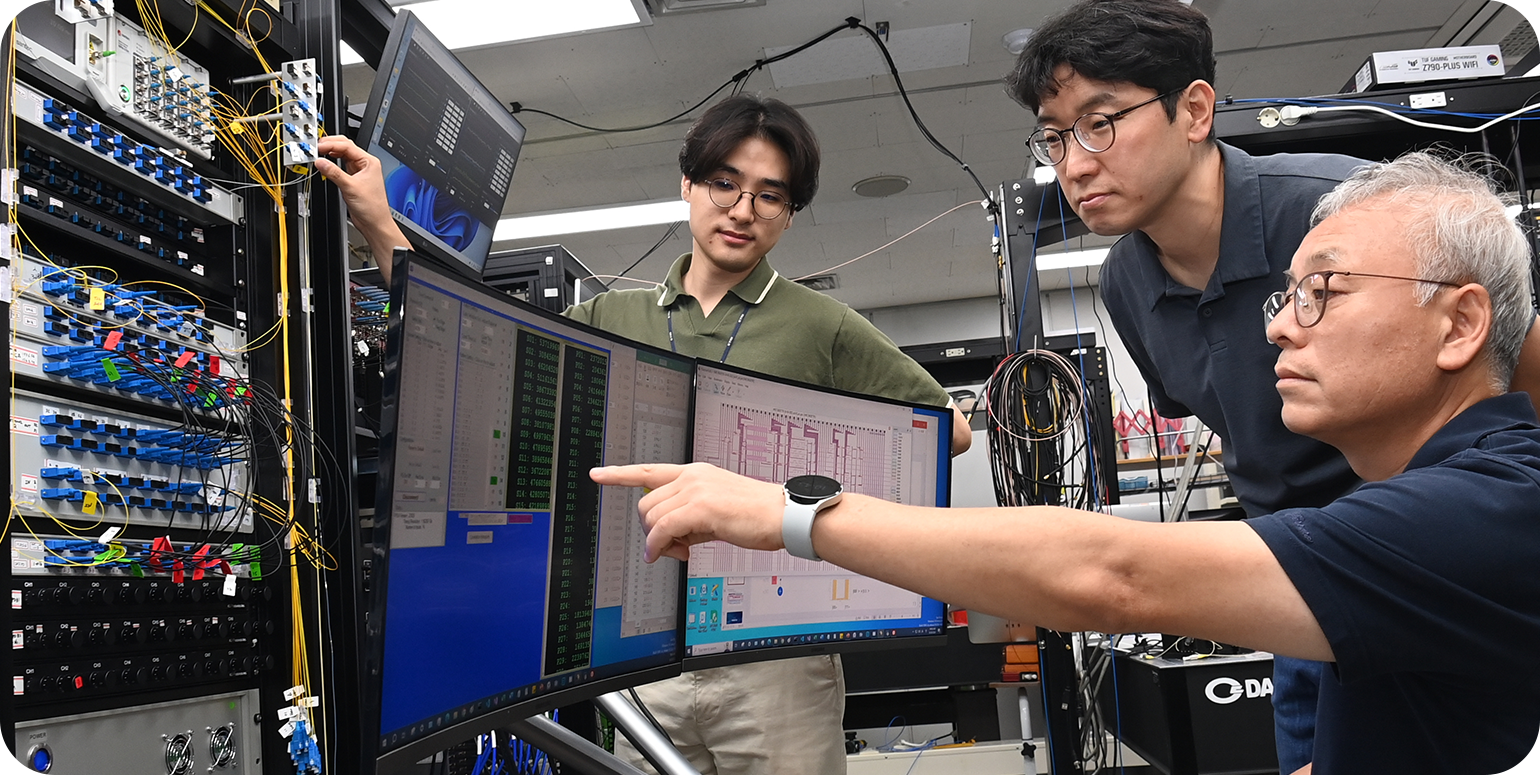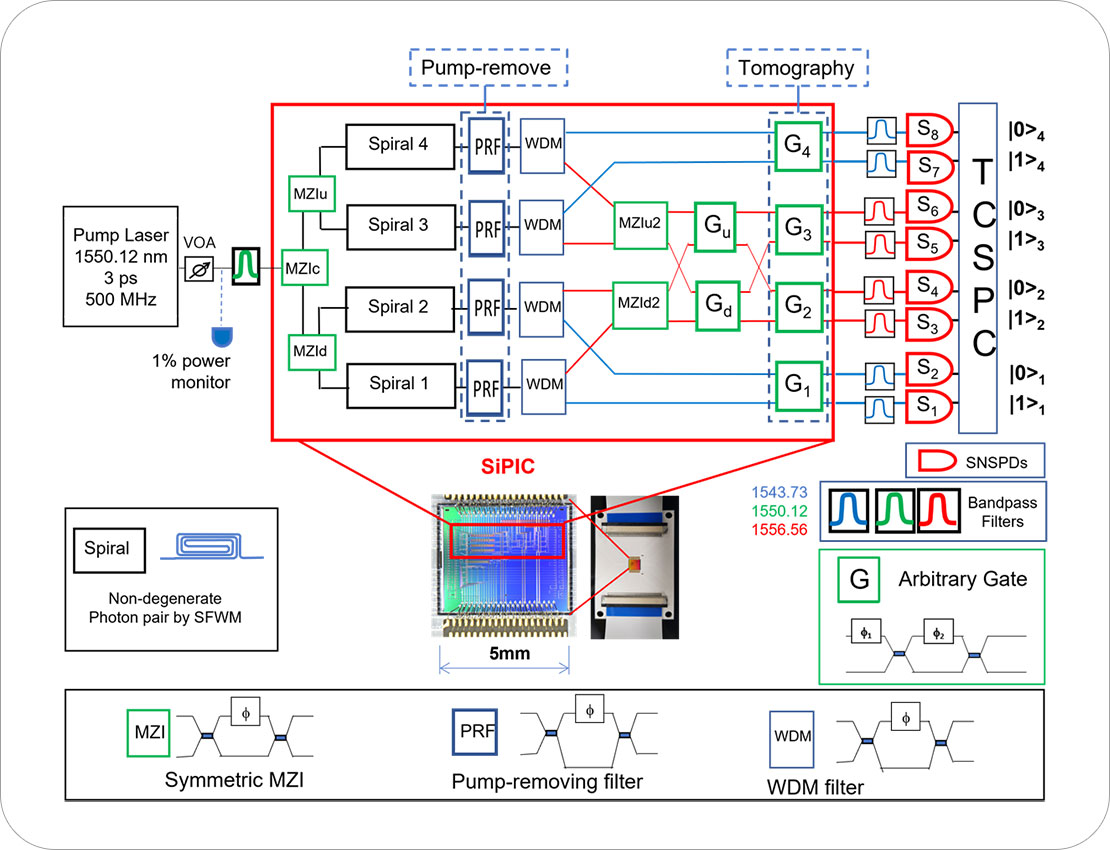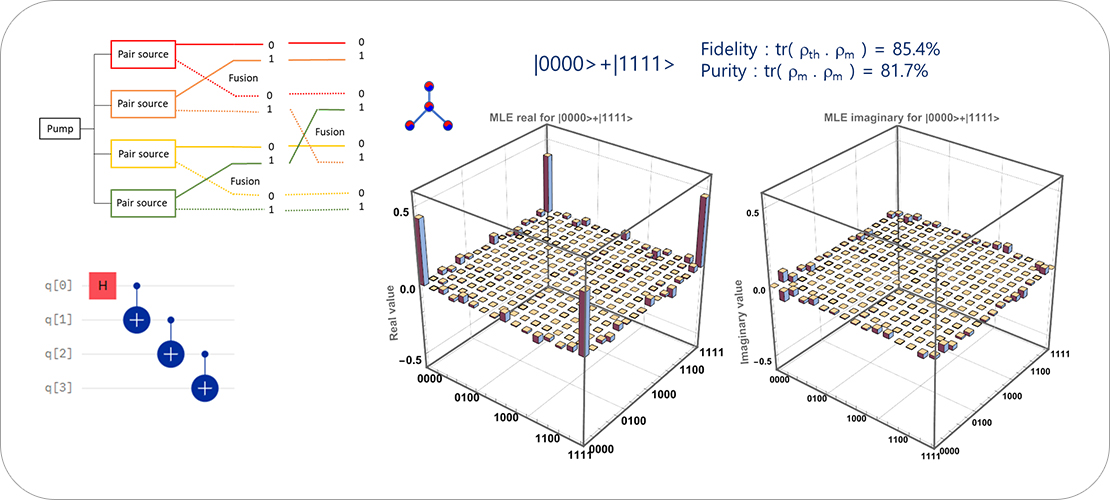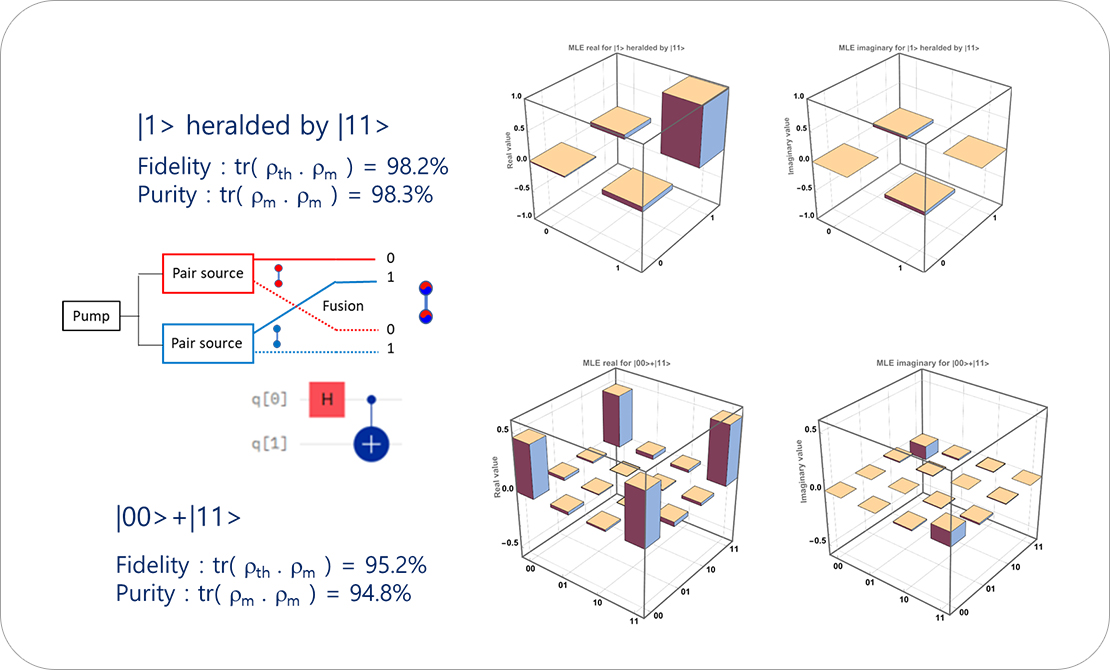ETRI, Demonstration of 8-Photon Qubit Chip for Quantum Computation
- Demonstration of an integrated circuit for quantum interference of 8-photon qubits
- Development of a programmable silicon-photonic quantum circuit

A group of South Korean researchers has successfully developed an integrated quantum circuit chip using photons1) (light particles). This achievement is expected to enhance the global competitiveness of the team in quantum computation research.
Electronics and Telecommunications Research Institute (ETRI) announced that they have developed a system capable of controlling eight photons using a photonic integrated-circuit chip. With this system, they can explore various quantum phenomena, such as multipartite entanglement resulting from the interaction of the photons.

Package Image & Conceptual Chart of a Recon Photonics 4-Qubit Chip
ETRI’s extensive research on silicon-photonic quantum circuits has led to the demonstration of 2-qubit2) and 4-qubit quantum entanglement3), achieving the best performance from a 4-qubit silicon photonics chip. This achievements resulted from their collaborative effort with KAIST and the University of Trento in Italy and were published4) in the prestigious scientific journals, Photonics Research and APL Photonics.
As a further advancement, ETRI recently demonstrated 6-qubit entanglement using a chip designed to control 8-photonic qubits. The 6-qubit entanglement represents a record-breaking achievement in quantum states based on a silicon-photonic chip.

Tomography Measurements of a Quantum Circuit (4-Qubit GHZ State)

Tomography Measurements of a Quantum Circuit (1-Qubit & 2-Qubit State)
Quantum circuits based on photonic qubits are among the most promising technologies currently under active research for building a universal quantum computer5). Several photonic qubits can be integrated into a tiny silicon chip as small as a fingernail, and a large number of these tiny chips can be connected via optical fibers to form a vast network of qubits, enabling the realization of a universal quantum computer. Photonic quantum computers offer advantages in terms of scalability through optical networking, room-temperature operation, and the low energy consumption.
A photonic qubit can be encoded using a pair of propagation paths of a photon, with one path assigned as 0 and the other as 1. For a 4-qubit circuit, 8 propagation paths are required, and for 8 qubits, 16 paths are needed. Quantum states can be manipulated on a photonic chip, which includes photon sources, optical filters and linear-optic switches, and are finally measured using highly sensitive single-photon detectors.
The 8-qubit chip includes 8 photonic sources and approximately 40 optical switches that control the propagation paths of the photons. About half of these 40 switches are specifically used as linear-optic quantum gates6). The setup provides the fundamental framework for a quantum computer by measuring the final quantum states using single-photon detectors.
The research team measured the Hong-Ou-Mandel effect7), a fascinating quantum phenomenon in which two different photons entering from different directions can interfere and travel together along the same path. In another notable quantum experiment, they demonstrated a 4-qubit entangled state on a 4-qubit integrated circuit (5mm x 5mm). Recently, they have expanded their research to 8 photon experiments using an 8-qubit integrated circuit (10mm x 5mm). The researchers plan to fabricate 16-qubit chips within this year, followed by scaling up to 32-qubits as part of their ongoing research toward quantum computation.
Yoon Chun-Ju, Assistant Vice President of the Quantum Research Division of ETRI, said, “We plan to advance our quantum hardware technology for a cloud-based quantum computing service. Our main goal is to develop a lab-scale system to strengthen our research capabilities in quantum computation.”
Lee Jong-Moo with ETRI’s Quantum Computing Research Section, who led this achievement, stated, “Research for the practical implementation of quantum computers is highly active worldwide. However, extensive long-term research is still needed to realize practical quantum computation, especially to overcome computational errors caused by noise in the quantum processes.”
The silicon photonics quantum chip research has been conducted as part of ETRI’s in-house New Concept Research Project, “Exploration of Silicon Photonics-Based Quantum Computer,” and is supported by the National Research Foundation of Korea as part of their Quantum Computing Development Project.
Over the past decade, ETRI has achieved significant milestones in the field of quantum technology, including ▲transmission of wireless quantum cryptography communication (100m) ▲development of quantum computing compiler technologies ▲standardization of quantum cryptography transmission systems in collaboration with the three major Korean telecom companies ▲development of key technologies for quantum internet operating at room temperature ▲ technology verifying cryptographic quantum security ▲development of quantum algorithms for post-quantum cryptography and demonstration of the entire post-quantum approach ▲acquisition of high-speed homomorphic encryption chip technology.
Currently, ETRI has emerged as a global leader, concentrating on quantum computation, communication, and sensors, with a strong emphasis on the development and commercialization of quantum technologies.
Glossary
1) Photons: Another word for ‘light.’ In quantum physics, ‘photon’ is a countable unit of ‘light.’
2) 2-Qubit Quantum Entanglement (Bell 95% Fidelity): The ‘Bell State’ refers to a state in which two photon qubits are entangled. ‘Fidelity’ refers to the ratio of the measured value compared to the theoretically ideal entangled state.
3) 4-Qubit Quantum Entanglement (GHZ 85% Fidelity): The ‘GHZ State’ refers to a state in which three or more photon qubits are entangled. In this study, four photonic qubits were entangled to realize the entangled GHZ state.
4) Photonics Research(November 2023) and APL Photonics (July 2024)
5) Quantum Computing technologies: In addition to the photonic qubits, many global research groups are using various platforms to develop quantum computers such as superconductors, ions, atoms, quantum dots, diamonds etc.
6) Quantum Gate: A Quantum Gate is a device that arbitrarily controls and changes the value of a qubit, which is represented by a complex number between 0 and 1.
7) 2-Photon Quantum Interference (HOM (Hong-Ou-Mandel) Interference 98% Visibility): A quantum phenomenon in which two photons clump together when two indistinguishable, yet identical photons meet in a 45-degree semi-reflective mirror. It is normally used as a measure to distinguish the completeness of photon qubit quantum states. The term ‘visibility’ refers to the possibility of the photons moving through while being clumped together.
Hwang Yongsoo, Director
Quantum Computing Research Section
(yhwang@etri.re.kr)
Lee Jong-Moo, Principal Researcher
Quantum Computing Research Section
(jongmool@etri.re.kr)
 Previous
Previous